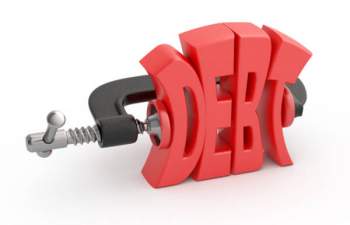
The Truth about Debt Reduction

Related Forms
Schedule B - Personal Property
Schedule C - Property Claimed as Exempt
Schedule D - Creditors Holding Secured Claims
Schedule E - Creditors Holding Unsecured Priority Claims
Schedule F - Creditors Holding Unsecured Nonpriority Claims
Schedule G - Executory Contracts and Unexpired Leases
Schedule I - Current Income of Individual Debtor(s)
Schedule J- Current Expenditures of Individual Debtor(s)
Summary of Schedules (Includes Statistical Summary of Certain Liabilities)
List of Creditors Holding 20 Largest Unsecured Claims
Debtor's Certification of Completion of Instructional Course Concerning Financial Management
View All
What is Debt Reduction?
Debt reduction is a financial and legal process within which the debt incurred by individual debtors may be significantly decreased through a variety of resolution and rectification; however, the provision of Debt Reduction should neither be viewed as magical, nor a quick fix – individuals undertaking measures in order to undergo Debt Reduction are encouraged to seek out viable, legitimate, and legal methods within which to reduce their respective debt.
Although a variety of Debt Reduction methods exist, which are considered to be both reliable and effective, an equal number of illicit and fraudulent Debt Reduction programs exist in tandem with those considered to be legal.
Legitimate vs. Illegitimate Debt Reduction
The following facts may be reviewed with regard to the selection process of a Debt Reduction program in order to provide assistance in determining the best Debt Reduction for you:
Debt Reduction programs advertising upwards of a 70% reduction are largely considered to be not only unrealistic, but fraudulent, as well; while certain Debt Reduction programs making these claims may be legitimate, individuals are encouraged to seek professional counsel prior to engaging in any Debt Reduction program or opportunity
Amongst the most viable and effective means of attaining legitimate Debt Reduction is seeking out the advice of trusted friends, colleagues, and networks who have undergone debt resolution and management; upon seeking the advice of trusted resources who have participated in Debt Reduction, you may be able to gain initial acclimation to debt assistance programs offered prior to undertaking them
In the event that you are unable or unwilling to seek out the opinions of trusted friends or networks, undertaking legal counsel through a certified and accredited attorney specializing in debt legality, the analysis of Debt Reduction resources, and the provision of debt management strategies is considered to be amongst the most reliable and efficient options
Profit Debt Reduction vs. Non-Profit Debt Reduction
Non-Profit Debt Reduction is a type of financial, procedural, and strategy-based resource offered by a financial institution on a non-profit basis, which allows individual debtors – both private and commercial to undertake opportunities to formulate plans in order to relieve or resolve the entirety of the respective debt incurred; a non-profit Debt Reduction differs from commercial Debt Reduction resources with regard to the manner in which the service itself is provided.
Typically, a non-profit Debt Reduction will operate in one of 2 ways; the first method occurs through the oversight or funding provided the jurisdictional governing body – the second method takes place in the form of a pro-bono Debt Reduction resource program instituted on individual prorating or charity. However, both non-profit debt reduction programs, as well as those considered ‘for-profit’ might offer the following resources:
Debt Reduction through Consolidation allows individual debtors to combine the entirety of their debts into a single debt within which a single interest rate is applicable concerning its repayment
Debt Reduction through Debt Settlement allows individual debtors the opportunity to agree to furnish a decreased repayment in lieu of the gross amount of the debt in question; however, this type of Debt Reduction may require the debtor or debtors to furnish repayment in a single lump sum payment



















